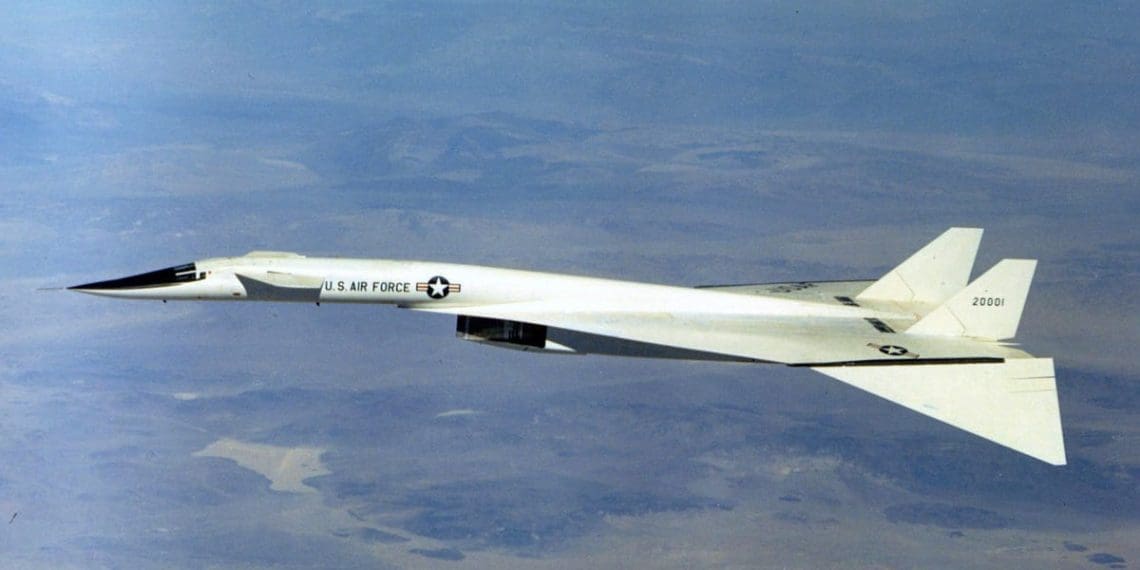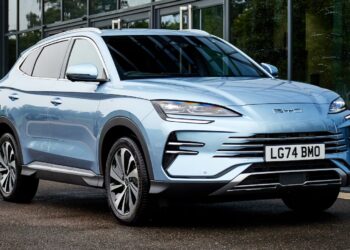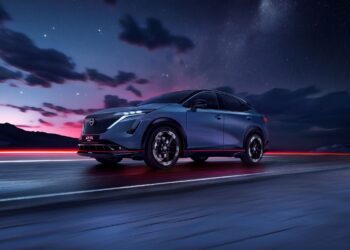During the major conflict, bombers played a very important role, and that meant airplanes designed to rain destruction from above would remain in use ever since. But they changed in terms of both design and capabilities, not in small part in a bid to avoid the increasingly more capable means of countering them.
Back in the 1950s, America had a series of bombers at its disposal, but it was also working on a new generation of the breed. As jet engines kept evolving, impressive machines such as the B-52 Stratofortress and B-58 Hustler came about, promising to keep America safe and its enemies at bay.
But both these planes had their limitations – the B-52 was not particularly fast, and the Hustler did not have a particularly long range. So the U.S. Air Force started looking for a platform that would combine the reach of the former with the speed of the latter.
That platform would come to be known as the XB-70 Valkyrie, and it was made by North American Aviation. It is one of those impressive aircraft that came this close to being made, but never got to fly on an actual mission.
The Valkyrie was supposed to be a nuclear bomber capable of going deep into enemy territory and striking high-value targets. It was powered by no less than six General Electric turbojet engines that played the game in the 30,000-pound thrust class.
All the engines were positioned at the rear of the plane, as is customary with jet aircraft, and their combined power would have given the thing a top speed of over Mach 3 (2,300 mph / 3,700 kph).
That was blistering fast, and well above any interceptor plane’s or anti-aircraft gun’s (the main tech used to counter bombers at the time) ability to stop it. The Valkyrie would have also flown at altitudes of 77,350 ft (23,580 m), complicating matters even further for the defenders.
Design-wise, the bomber was a delta-winged aircraft with a canard surface. It employed new building techniques and materials, including stainless steel, titanium, and sandwiched honeycomb panels.
Developed in the 1950s, the plane was supposed to enter service in 1963, but a major breakthrough in defense technology, surface-to-air missiles, kind of canceled all of its speed and altitude advantages.
Separately, its main mission of dropping nuclear bombs on the enemy’s heads became irrelevant as the intercontinental ballistic missiles stepped into the scene, promising to deliver the same punch faster, cheaper, and much more effectively.
That’s why the XB-70 Valkyrie was officially canceled in 1961. But that doesn’t mean the plane went away: the USAF decided to use the design to look into the effects of long-duration flight at high speeds.
For the task at hand, North American Aviation produced two prototypes called XB-70A. The first one took to the sky in 1964. The Valkyrie went supersonic for the first time that same year, and the pair would continue flying up until 1966.
In a tragic incident, one of two planes was destroyed, resulting in the death of two airmen. The catastrophe occurred during a photo shoot organized by General Electric. The purpose was to capture images of the plane flying alongside an F-104 Starfighter, as well as other American-made aircraft such as the F-4 Phantom, F-5, and T-38 Talon.
Despite the setback, the remaining Valkyrie continued to be utilized until the end of the decade. Eventually, it was retired and placed on exhibit at the National Museum of the United States Air Force near Dayton, Ohio. The valuable insights gained from this aircraft were instrumental in the development of the B-1 Lancer bomber by the USAF and military contractors.
Notably, the Soviet Union also learned from the Valkyrie and utilized the knowledge to create their own supersonic airliner, the Tupolev Tu-144. This revelation highlights the significant impact of the XB-70 Valkyrie.
Excitingly, a computer-generated video showcasing the XB-70 Valkyrie has recently been released. Created by animation specialist Hazegrayart, the high-definition footage allows viewers to witness the aircraft in action, even pushing the boundaries of space.
Beyond its nuclear deterrence capabilities, the Valkyrie possessed the potential to serve as a versatile cargo plane, aerial tanker, and even a launch platform for satellites. Unfortunately, today, the only way to experience the beauty of this remarkable machine is through museum visits or this captivating video.










